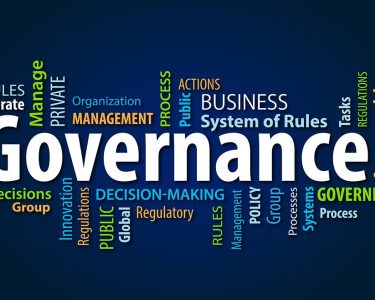Are you curious about the complex relationship between economic growth and stability in policy making? As economies globally continue to face unprecedented challenges, policymakers are tasked with balancing these two objectives. Join us as we delve into the intricacies of economic considerations in policy making and explore how governments can create sustainable plans that promote both growth and stability. From analyzing fiscal policies to examining monetary interventions, this blog post will provide key insights on how policymakers can navigate this delicate balance for the benefit of their citizens.
The Role of Economics in Policymaking
The role of economics in policymaking is to help policymakers make informed decisions about how to allocate resources in order to maximize growth and stability. The goal of economic policy is to promote overall prosperity by improving the conditions for economic growth and job creation while mitigating the risks associated with unstable macroeconomic conditions.
One important aspect of economic policymaking is assessing the impact of various policies on the economy. Economic indicators, such as GDP growth, inflation, and unemployment rates, can provide policymakers with valuable information about how well a particular policy is working. Additionally, economists may use simulation models to evaluate the consequences of alternative policy scenarios.
Policymakers also consider feedback mechanisms when making decisions about economic policies. For example, if a tax increase leads to an increase in spending due to lower demand for goods and services, then this will lead to increased inflation. In order to avoid this type of cycle, policymakers must carefully weigh all available evidence when making decisions about economic policies.
The Three Economic Components of Policymaking
Economic policymaking is the process by which governments make decisions that affect the economy. In order to make sound economic decisions, policymakers must understand the three economic components: growth, inflation, and unemployment.
Growth is the increase in the size of an economy over time. It is measured by Gross Domestic Product (GDP). GDP is composed of two main parts: consumer spending and government spending. Consumer spending includes everything from buying a new car to investing in a stocks market transaction. Government spending includes everything from subsidies for companies to paying for military defense.
Inflation is an increase in the prices of goods and services over time. It is measured by the Consumer Price Index (CPI). CPI tracks prices of a representative basket of consumer items purchased by urban households. The index measures changes in cost of living caused by inflation, not changes in wages or income.
Unemployment is the percentage of people who are looking for work but can’t find it. Unemployed people can be counted as well as underemployed people – those who have jobs but would like more hours or higher pay.
Fiscal Policy
As the economy continues to grow, policymakers must weigh the benefits of additional economic growth against potential consequences such as higher inflation or greater debt levels. Fiscal policy is one means by which policymakers can achieve a desired balance between economic growth and stability.
In order to maintain consistent economic growth, fiscal policy must be stimulatory (in the case of expansionary fiscal policies) or contractionary (in the case of restrictive fiscal policies). Stimulus-based fiscal policies increase aggregate demand by providing funding for investment and increasing consumer spending. Conversely, contractionary fiscal policies decrease aggregate demand by reducing government spending and decreasing consumer spending.
There are many factors that go into the determination of effective tax rates and government expenditure levels, so it is important for policymakers to have a good understanding of both macroeconomic fundamentals (such as GDP growth, inflation rates, and interest rates) and specific vulnerabilities within an economy in order to set appropriate fiscal policy goals. In addition to setting tax rates and expenditures, policymakers also have to consider how much debt they want their country to carry relative to its GDP. Too much debt can lead to financial instability while too little debt may not provide enough stimulus when needed most.
Fiscal policy has a significant impact on both short-term economic activity (such as job creation) and long-term economic stability. It is important for policymakers to make wise choices when using this tool in order to achieve the best outcomes for the economy as a whole.
Monetary Policy
Monetary policy is the act of managing the supply of money in an economy to achieve desirable economic outcomes. In times of economic distress, monetary policymakers seek to stimulate spending and output by increasing the availability of cash and credit, while at other times they may seek to moderate inflation by altering the interest rate at which banks lend to each other. Monetary policymakers also have influence over the value of national currencies.
There are a number of theories surrounding monetary policy, but most economists agree that it is best executed as a response to actual events in the economy. For example, if there are signs that prices are slowly increasing too quickly, then a central bank may begin raising interest rates in order to slow down spending and inflation. Conversely, if there are indications that prices are beginning to fall too quickly, then a central bank may lower interest rates in order to stimulate spending and increase inflation (or growth).
Aside from affecting prices and wages directly, monetary policy can also have indirect effects on the economy. For example, when interest rates are raised, it becomes more expensive for businesses and individuals borrow money; this can lead to reduced investment and higher borrowing costs for consumers. As a result, monetary policymakers must consider a wide range of factors when making decisions about how much money to print or borrow in order to maintain stability in the financial system and economy as a whole.
Trade Policy
Trade policy represents one of the most important areas of economic intervention by a government. The goal of trade policy is to promote economic growth and stability by creating effective markets for goods and services, while minimizing distortionary effects on domestic production.
There are six main goals of trade policy: expanding market access, promoting technological innovation, protecting intellectual property rights, increasing productivity, reducing barriers to international investment, and mitigating environmental damage. Trade policy also aims to ensure that workers in exporting countries receive a fair share of the benefits from increased exports.
In order to achieve its objectives, trade policy typically employs three main tools: tariffs, quotas, and subsidies. Tariffs are taxes applied to imported goods; quotas limit the quantity of a particular good that can be imported into a country; and subsidies provide financial assistance to producers in order to increase their output. Tariffs and quotas can be used together or separately; for example, tariffs can be used to restrict the importation of particular goods while imposing no limits on the importation of other goods, or quotas can be used to restrict the importation of certain types of goods while allowing the importation of other types of goods.
Tariffs and subsidies are often considered unilateral actions since they do not involve any cooperation with other countries. Quotas are considered bilateral actions since they involve negotiations between countries involved in the quota agreement. Unilateral actions such as tariffs and subsidies may have negative consequences if they lead to retaliation by other countries or if they cause higher
Conclusion
In today’s economy, policymakers face a difficult task when attempting to balance growth and stability. On the one hand, an ever-growing population and an expanding economy can lead to increased demand for goods and services, which can boost economic growth. However, if this growth is not accompanied by sound financial policies or adequate infrastructure development, it could result in instability and even recession. In order to ensure that economic development benefits all participants while avoiding harmful consequences, policymakers must carefully consider a variety of factors when making decisions.




